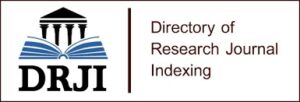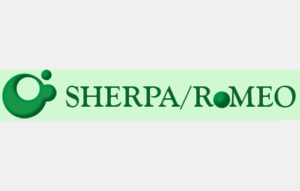INTRODUCTION
From 1979 on I have got many Odonata specimens from friends or from insects markets, which I could identify. I was member of the Berlin Entomologic society. I was also member of GDO (German speaking odonatologists) and of the S.I.O. (Societas Internationalis Odonatalogica). From 1980 I have made some contributions on the Odonata fauna in Germany. 1993 I visited Japan for an S.I.O.-Odonata Meeting, 1995 in Essen, Germany, 1999, in North America, 2001 in North Sweden, 2004 in Schwerin, Germany und 2015 in Argentina. 1996 und 2001 I have visited a friend in Venezuela. 2003 I was in the Philippines for a lecture journey, where I could see any Odonata. Also, from museums I received any odonata over the years for the identification. The new species I have integrated in my odonata collection, which belongs since some month to the Museum for natural science in Leipzig and I am furthermore responsible for this. In this contribution I will describe my book „Dragonflies and Damselflies of the Continents“. A new species Castoraeshna bedei Peters in Hartung (2024) and some aspects on the Calopteryx in South East Europa I have described.
The book describes may findings from small amounts to big amounts. Since 2021 the collection of odonata is worldwide forbidden. Therefore, the Information of the fauna of odonata is unknown in many countries. My book should show, that the collection in small amounts should be allowed in the near future, to have more information on the local fauna. Small amounts have no damaging effect for a fauna. In an African project people were schooled to collect odonata in small amounts each and to bring the materials to a special institute (Clausnitzer & Kipping, 2025).
Odonata specimens I have got from several persons, from Greece and from my own collection. Some Calopteryx forms and species of Greece incl. Crete and of West Turkey I have described as a new combination. Calopteryx forms of the south of the Peloponnese may be a new species, Calopteryx eurotasia. The northern form in Greece up to east Europe is Calopteryx ancilla. The form of Crete is Calopteryx cretensis. The species of west and south of Turkey and also in Cyprus is Calopteryx amasina (c.f. Hartung, 2023).
The following species were new for the fauna of the island of New Guinea (Lieftinck, 1949): Rhinocypha ustulata Brauer, 1867, Nososticta africana (Schmidt, 1944), Nososticta exul (Selys, 1886), Gynacantha basiguttata Selys, 1892, Diplacina arsinoe Lieftinck, 1953, Diplacina dioxippe Lieftinck, 1963, Diplacina phoebe Ris, 1919, Neurothemis terminata Ris, 1911, Neurothemis ramburi (Brauer, 1866), Neurothemis manadensis (Boisduval, 1835), Huonia thais Lieftinck, 1953, Tramea transmarina Brauer, 1867, Urotemis bisignata Brauer, 1868.
This Book show the species of odonata from Venezuela. 1996 and 2001 I have visited Venezuela. The new species Heteragrion palmichale I have described (Hartung, 2002). The exuvia of Micrathyria venezuelae I have also described as new (Hartung, 2022). Hartung (2024) described all Odonata from his collection from Venezuela. Lestes jerrelli Tennessen, 1997, I could describe as new for Venezuela from Salto Cathedral, Bolivar.
In 1994 Joachim Hoffmann has given me a baggage of odonata from the Museum Naturalis Lima. Many of these odonata were identified from Paulsen before. Some results are also presented in the paper of Hoffmann (2009). 23 species in my material are not mentioned in the list of Hoffmann (2009). The following 10 species are found as additional in Peru according to the list of Hoffman (2009), but there are known from the near Amazonas area or from Peru, Polythore lamerceda (Peru), Polythore neopicta, Polythore aurora – Amazonas, Polythore procera – Amazonas, Heteragrion bariai – Ecuador, Peru, Venezuela, Rondonia, Acanthagrion ascendens – Trinidad, Colombia, Venezuela, Guyana, Surinam, Ecuador, Peru, Paraguay, Argentia, Santa Catarina, Sao Paulo, Goia, Mato Grosso, Rondonia, Acanthagrion minutum – Peru, Bolivia, Venezuela, Sao Paulo, Psaironeura tenuissima – Ecuador, Peru, Guyana, Para, Amazonas, Rondonia, Microstigma anomalum – Peru, Bolivia, Para, Amazonas, Megaloprepus brevistigma – Peru, Venezuela.
13 species are found as new for the Peru fauna. The following species (the locations are given according to Heckman (2006, 2008): Hetaerina duplex – Colombia, Hetaerina proxima – Argentina, Bolivia, Polythore mutata – Ecuador, Colombia, Heteragrion mitratum – Colombia, Acanthagrion dichrostigma – Venezuela, Acanthagrion cuyabae – Bolivia, Argentina, Mato Grosso, Sao Paulo, Rio Grande de Sul, Mesamphiagrion laterale – Ecuador, Colombia, Venezuela, Epipleoneura ocuene – Venezuela, Epi-gomphus paludosus – Argentina, Paraguay, Minas Gerais, Sao Paulo, Micrathyria almeidai – Goias, Federel District, Minas Gerais, Sao Paulo, Rio de Janeiro, Erythrodiplax abjecta – Mexico, Central America, West Indies, Colombia, Ecuador, Venezuela, Mato Grosso do Sul, Erythrodiplax nivea – Sao Paulo, Macrothemis imitans – Central America, Trinidad, Venezuela, Guyana, Bolivia, Paraguay, Argentina, Santa Catarina, Sao Paulo, Mato Grosso.
Castoraeshna bedei Peters in Hartung, 2024, is a new species of Aeshnids and Castoraeschna in Brazil. This species belongs of the subgroup with a black stem at frons. Castoraeschna bedei Peters in Hartung, 2024 differs by the appendices from C. tepuica (only Venezuela), from C. decurvata, and from C. januaria, but this last species occurs also in Brazil and Minas Grais. Castoraeschna bedei Peters in Hartung, 2024 is smaller than C. decurvata and C. tepuica. The upper appendix of C. januaria curved down. 2024 is a new species and differs from the other species of Castoraeschna (Heckmann, 2006).
Epilog
The book “Dragonflies and Damselflies of the Continents” of Matthias Hartung will show, that several small collections will help, to give information on this fauna. Since 2021 the collection is forbidden. Tourist, which collect insect were not seldom before 2021. They have collected during their travel not more than small amounts of insect. These small amounts could not damage the fauna. In future the collection during travels should again allowed, in contrast professional collection should not again allowed.
References
- Viola Clausnitzer & Jens Kipping (2025): Afrikas fliegende Juwelen – Libellenforschung in Raum und Zeit. GDO-Meeting, 14.-16.3.2025
- Hartung, M. (2002): Heteragrion palmichale nov., a new damselfly from the Cordillera de Vene-zuela (Zygoptera: Megapodagrionidae). Odonatologica, 31(2): 187-191.
- Hartung, M. (2022): Venezuela (Zygoptera: Megapodagrionidae) Micrathyria venezuelae De Marmels, 1989 (Odonata: Libellulidae). Odonatologica, 51(1/2): 147-156.
- Hartung, M. (2023): Contribution to The Calopteryx-forms of the Peloponnesus (Odonata: Caloptery-gidae). Scirea Journal of Biology, 8: 99-117.
- Hartung M. (2023): Description of The Larva of Oxyallagma dissidens (Selys, 1876) (Odonata: Coe-nagriidae, Ischnurinae). American Journal of Entomology, 7(1): 9-12.
- Hartung, M. (2024): Contribution to the Odonata from the island New Guinea 1995 to 2019. International Journal of Current Research, 16(09): 29730-29741.
- Hartung, M. (2024): Odonata from Venezuela 1985. International Journal of Current Research, 16(02): 27188-27197 De La Costa, Venezuela (Zygoptera: Megapodagrionidae).
- Hartung, M. (2024): Some new Odonata from Peru. International Journal of Current Research, 16(08): 29408-29418.
- Matthias Hartung (2025): Dragonflies and Damselflies of the Continents. BoD Boolks on Demand GmBH, Überseering 35, 22297 Hamburg, 448 p.
- Heckman, Charles W. (2006): Encyclopedia of South American Aquatic Insects: Odonata – Anisoptera. Springer Science and Business Media B. v.: 725p.
- Heckman, Charles W. (2008): Encyclopaedia of South American Aquatic Insects: Odonata-Zygoptera. Springer Science and Business Media B. v. 691 p.
- Hoffmann, Joachim (2009): Summary catalogue of the Odonata of Peru, kommentiertes Faksimile des Manuskripts von J. Cowley, Cambridge, 20.05.1933 und aktuelle Liste der Odonaten Perus mit Fundortangaben sowie Historie zu Sammlern und Odonatologen in Peru. IDF-report, 16: 1-117.
- Lieftinck, M. A. (1932): The dragonflies (Odonata) of new guinea and neighbouring islands. Part i. descriptions of new genera and species of the families Lestidae and Agrionidae. Nova Guinea 15: 485-602, 67 Text-fig.
- Lieftinck, M. A. (1949): The dragonflies (Odonata) of new guinea and neighbouring islands. Part VII. results of the third archbold expedition 1938-1939 and of le roux expedition 1939. Nova Guinea, N.s. 5: 1-271, 1 Map, 355 text-fig.
- Michalski, J. (2012): A manual for the identification of the dragonflies and damselflies of New Guinea, Maluku and the Solomon Island. Kanduanum Books, Morristown, new Jersey, USA: 561 p.




















